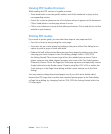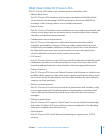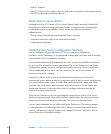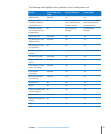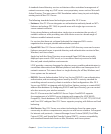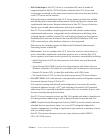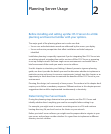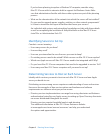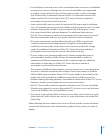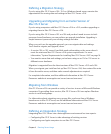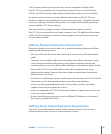
 Web Technologies: Mac OS X Server is a complete AMP stack (a bundle of
integrated Apache-MySQL-PHP/Perl/Python software). Mac OS X Server web
technologies are based on the open source Apache web server, the most widely
used HTTP server on the Internet.
With performance optimized for Mac OS X Server, Apache provides fast, reliable
web hosting and an extensible architecture for delivering dynamic content and
sophisticated web services. Because web service in Mac OS X Server is based on
Apache, you can add advanced features with plug-in modules.
Mac OS X Server includes everything professional web masters need to deploy
sophisticated web services: integrated tools for collaborative publishing, inline
scripting, Apache modules, custom CGIs, and JavaServer Pages and Java Servlets.
Database-driven sites can be linked to the included MySQL database. ODBC and
JDBC connectivity to other database solutions is also supported.
Web service also includes support for Web-based Distributed Authoring and
Versioning, known as WebDAV.
 File Services: You can congure Mac OS X Server le services to allow clients to
access shared les, applications, and other resources over a network. Mac OS X
Server supports most major service protocols for maximum compatibility, including:
 Apple Filing Protocol (AFP), to share resources with clients who use Macintosh
computers.
 Server Message Block (SMB), a protocol to share resources with clients who use
Windows computers. This protocol is provided by the Samba open source project.
 Network File System (NFS), to share les and folders with UNIX clients.
 File Transfer Protocol (FTP), to share les with anyone using FTP client software.
 IPv6 (RFC 2460): IPv6 is the Internet’s next-generation protocol designed to replace
the current Internet Protocol, IPv4 (or IP).
IPv6 improves routing and network autoconguration. It increases the number
of network addresses to over 3 x10
38
, and eliminates the need for NAT-provided
addressing. IPv6 is expected to gradually replace IPv4 over a number of years, with
the two coexisting during the transition.
Mac OS X Server’s network services are fully IPv6 capable and ready to transition to
the next generation addressing as well as being fully able to operate with IPv4.
 SNMP: Simple Network Management Protocol (SNMP) is used to monitor network-
attached devices’ operational status. It is a set of IETF-designed standards for
network management, including an Application Layer protocol, a database schema,
and a set of data objects.
Mac OS X Server uses the open source net-snmp suite to provide SNMPv3
(RFCs 3411-3418) service.
22 Chapter 1 System Overview and Supported Standards



